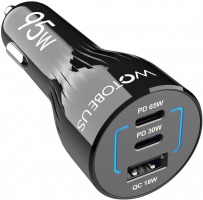Hello. I want to build a power bank/power wall that is able to power a laptop that draws 65W at peak and comes with a 45Wh battery.
1. What battery configuration (xSxP) works best if I need to use the laptop for say 50 to 80 hours (5 days/10 hours/day) plugged into the power bank? I have access to up to 80 2300mAH 18650 cells from new phone portable power banks.
2. Is it necessary to use a DC~AC inverter or will DC~DC voltage boosters work just fine? Is there an advantage of using one over the other?
3. What BMS works best at the lower end of the cost spectrum to handle such setup in (1).
4. What other components do I need apart from the batteries, and BMS?
The output of this power bank will be 12V and some 5V/2A USB ports which I will utilise the USB C Car Charger 95W
Thank you.

1. What battery configuration (xSxP) works best if I need to use the laptop for say 50 to 80 hours (5 days/10 hours/day) plugged into the power bank? I have access to up to 80 2300mAH 18650 cells from new phone portable power banks.
2. Is it necessary to use a DC~AC inverter or will DC~DC voltage boosters work just fine? Is there an advantage of using one over the other?
3. What BMS works best at the lower end of the cost spectrum to handle such setup in (1).
4. What other components do I need apart from the batteries, and BMS?
The output of this power bank will be 12V and some 5V/2A USB ports which I will utilise the USB C Car Charger 95W
Thank you.



